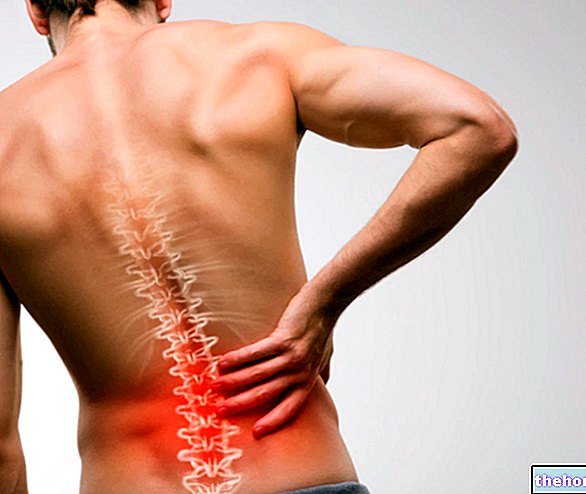Congenital aortic stenosis (SA) is generally due to malformation / absence of one of the valve leaflets. The malformation most frequently involved is represented by aortic bicuspidia (BA).
The diagnosis of this condition can be suspected based on the presence in a young subject of an actual click accompanied by an expulsive systolic murmur in the aortic area and / or jugulus and confirmed with relative ease with the "ECHO. The use of the" ECHO -Color-Doppler now allows a reliable non-invasive estimate of the severity of the defect (presence and extent of the Doppler gradient) and of the possible presence and extent of aortic regurgitation, which is not rarely associated.
From a practical point of view, minimal aortic stenosis is defined by a gradient <20 mm Hg at rest. Subjects with minimal SA or simple BA (without significant obstruction or regurgitation) must perform ECG, ECO-ColorDoppler, stress test.
INDICATIONS
Individuals with minimal SA or uncomplicated BA can participate in all sports when the following criteria are met:
- absence of left ventricular hypertrophy (ECG, ECHO) and normal systolic and diastolic left ventricular function; normal size of the aortic bulb (ECO);
- normal maximal stress test;
- absence of significant hyperkinetic arrhythmias at rest and during specific training on the 24-hour Holter ECG.
Individuals with moderate (gradient> 20 mm Hg) to severe AS cannot participate in competitive sports.
In selected cases, subjects with successful SA corrected through valvuloplasty may be reconsidered for competitive sports with minimal cardiovascular commitment, as well as for certain other non-competitive activities.
Competitive fitness cannot be granted for non-operated subvalvular aortic membrane stenosis with a gradient of 20 mmHg.
For operated subvalvular aortic stenosis, competitive fitness can be granted to all sports if the following are not present in the postoperative functional assessment:
- residual gradients (> 20 mmHg);
- left ventricular hypertrophy or dilation (ECO); - aortic valve insufficiency;
- normal increase in working systolic blood pressure;
- normality of the work ECG, which must be free from ST, T segment alterations and arrhythmias.
On the other hand, greater caution must be observed for supravalvular stenosis in relation to the documented possibility of alteration of the coronary circulation.
Aortic coarctation (COA) is characterized by an "obstruction of flow at the level of the aortic arch, localized in the pre or post ductal area (Botallo's duct). It causes hypertension in the cephalic areas (head and upper limbs) and hypotension (with tissue hypoperfusion) of the distal districts (splanchnic area, kidneys, lower limbs).
In this section we will discuss the isolated form, without associated defects (aortic bicuspidia, DIV, etc.) which, however, are not rare in AOC and therefore must be sought carefully. COA should be suspected in any young person who presents:
- predominantly systolic arterial hypertension;
- reduction / absence of femoral pulses;
- effective systolic murmur with localization or posterior irradiation in the vertebral interscapular site).
The diagnosis must be confirmed by the demonstration of the existence of a pressure gradient between the two districts and / or by the visual demonstration of the anatomical defect. This diagnosis can now be carried out non-invasively with the ECHO-Doppler (pulsed and Color-Doppler) and possibly resorting to digital angiography and / or magnetic resonance imaging. These techniques have made cardiac catheterization of second choice, reserving it for doubtful cases.
An important aspect is represented by the analysis of the blood pressure behavior during maximal effort. Abnormally high exercise pressure values (> 230/110) even in apparently modest AOCs represent a negative element for sporting fitness.
INDICATIONS
Minimal forms of aortic coarctation, characterized by a pre-post-obstruction pressure gradient <20 mm Hg, a normal or slightly increased brachial blood pressure, a slight reduction of the femoral pulses, the absence of collateral circulation and significant left ventricular hypertrophy (ECG and ECO) can allow the practice of sports with minimum-moderate effort, with cardio-circulatory pressure. However, sports at risk of body collision are contraindicated in relation to the documented greater risk of aortic rupture as a result of thoracic trauma.
The moderate to severe forms, characterized by a pressure gradient> 25 mm Hg, hypertension at rest and under stress, large collateral circles, etc., contraindicate any type of sporting activity, generally requiring surgical correction of the defect.
After 6 months from the surgical correction of the defect, the subject can be reconsidered using the same criteria indicated above. Those who show complete or substantial regression (minimal residual COA) of the clinical instrumental alterations may participate in sports activities that do not involve a cardiovascular commitment of pressure.
Finally, we recall the Marfan syndrome, a hereditary disease of the connective tissue, as a cause of aortic dilations and the formation of aneurysms with the possibility of rupture and risk of sudden death. The subjects affected by this pathology are generally tall and long-limbed. This disease is a contraindication to sports.
The acquired valve defects are haemodynamically identified with an obstacle to the antegrade blood flow (and we will then speak of stenosis) or with a retrograde blood regurgitation (insufficiency) at the level of one or more heart valves.
Mitral stenosis
Mitral stenosis (MS) recognizes in almost all cases a rheumatic etiology. Left ventricular inflow obstruction results in an increase in left atrial pressure and pulmonary capillary pressure in resting conditions and, more markedly, during physical exercise in relation to the increase in heart rate (with a reduction in diastolic filling time and cardiac output) An independent risk factor is peripheral embolization.
The haemodynamic severity of MS can now be assessed reliably in a non-invasive way on the basis of clinical, electrocardiographic and especially ECO-Color Doppler data. With the echo-Doppler it is possible a reliable bloodless estimation of the mitral valve area, of the transvalvular gradient and of the pulmonary arterial pressure. However, in doubtful cases, especially when the anatomical conditions of the valve are to be assessed more precisely, the transesophageal echocardiographic approach can be used.
For example, MS can be considered mild in the presence of an estimated valvular area (AVM)> 2 cm2; moderate with an AVM between 1.1 and 1.9 cm2; severe in other cases.
INDICATIONS
In moderate to severe forms and in any case in the presence of stable atrial fibrillation, any competitive activity is contraindicated.
In mild forms and in selected cases of moderate MS in sinus rhythm, fitness for sport with minimal cardiovascular effort may be considered when normal exercise tolerance (maximal test) and the absence of significant arrhythmias during activity are documented. sport specific (24-hour Holter).
Patients with MS corrected by commissurotomy or valvuloplasty, 6 months after surgery, may be considered suitable for sports of minimal cardiovascular commitment, in the absence of pulmonary hypertension, with valvular area equal to or greater than 2 cm and without significant valve regurgitation.
Mitral insufficiency
Unlike mitral stenosis (which can obviously be associated in the rheumatic form), "mitral insufficiency (MI) recognizes a" multiple etiology: the classic rheumatic form (increasingly rare), mitral valve prolapse (the most frequent cause today), infective endocarditis, connective tissue diseases such as Marfan, etc.
In defining the severity of MI for the purposes of "sporting fitness, the first element of judgment is represented by its etiology, as it is obvious that:
- in the secondary forms the judgment is conditioned by the underlying disease;
- in the primitive forms (MI of rheumatic origin, or from prolapse of the flaps) the judgment must be formulated in relation to the "entity of the haemodynamic effort, evaluated on the basis of the size of the left atrial and ventricular cavity (ECG and ECHO), the behavior of the left ventricular function at rest and under exertion (investigations with radionuclides and / or ECHO-Doppler from exertion) and finally to the possible presence of arrhythmias (maximal exertion test and 24-hour Holter monitoring including a training session).
For practical purposes, a mitral regurgitation is considered mild characterized only by the stetoacoustic finding, confirmed by ECHO-Color-Doppler (mild to moderate Doppler regurgitation), with normality of the ECG and of the left atrial and ventricular dimensions at ECHO; moderate when there is a slight left ventricular enlargement with preserved ventricular function at rest and exertion (normal increase of the ejection fraction during dynamic exertion); severe in the other cases.
INDICATIONS
In cases with moderate and severe MI no competitive sports will be allowed.
Cases with mild MI will be able to play sports with minimal effort. In selected cases, suitability for medium-high commitment sports may be taken into consideration, with careful monitoring of the disease over time (six-monthly suitability).
Curated by: Lorenzo Boscariol
Other articles on "Congenital aortic stenosis; aortic coarctation; mitral stenosis and insufficiency"
- cardiovascular pathologies
- cardiovascular system
- athlete's heart
- cardiological examinations
- cardiovascular pathologies 3
- cardiovascular pathologies 4
- electrocardiographic abnormalities
- electrocardiographic abnormalities 2
- electrocardiographic abnormalities 3
- ischemic heart disease
- screening of the elderly
- competitive fitness
- cardiovascular sports commitment
- cardiovascular commitment sport 2 and BIBLIOGRAPHY




























